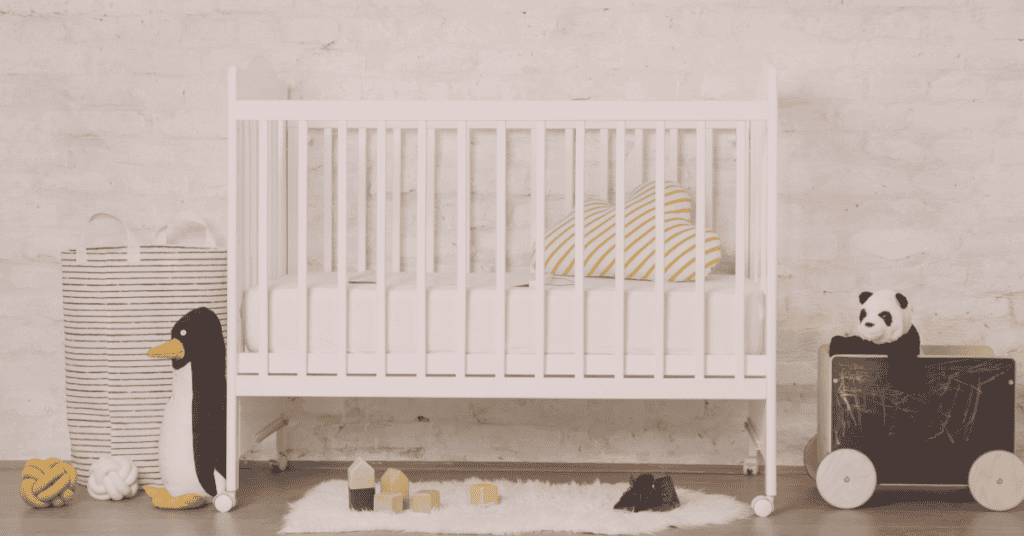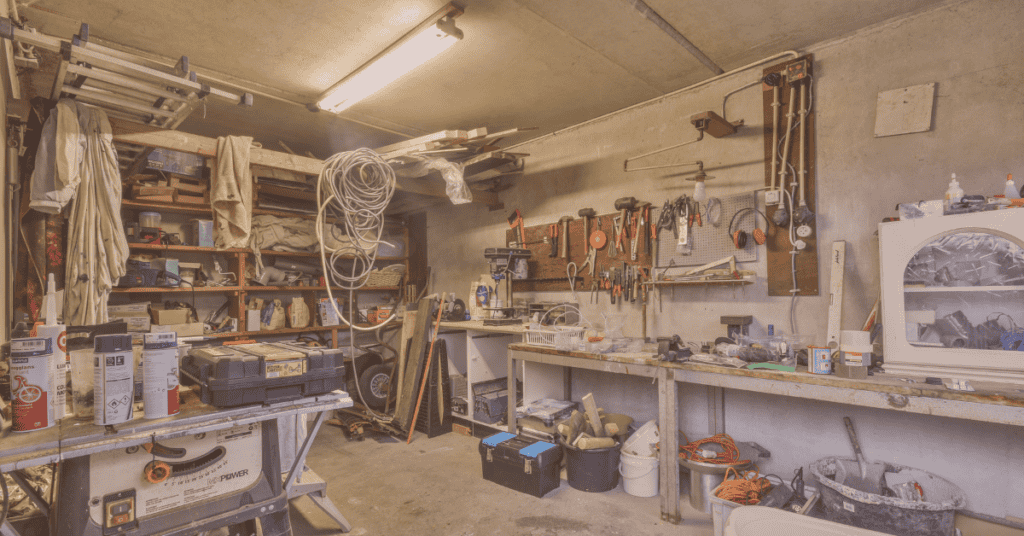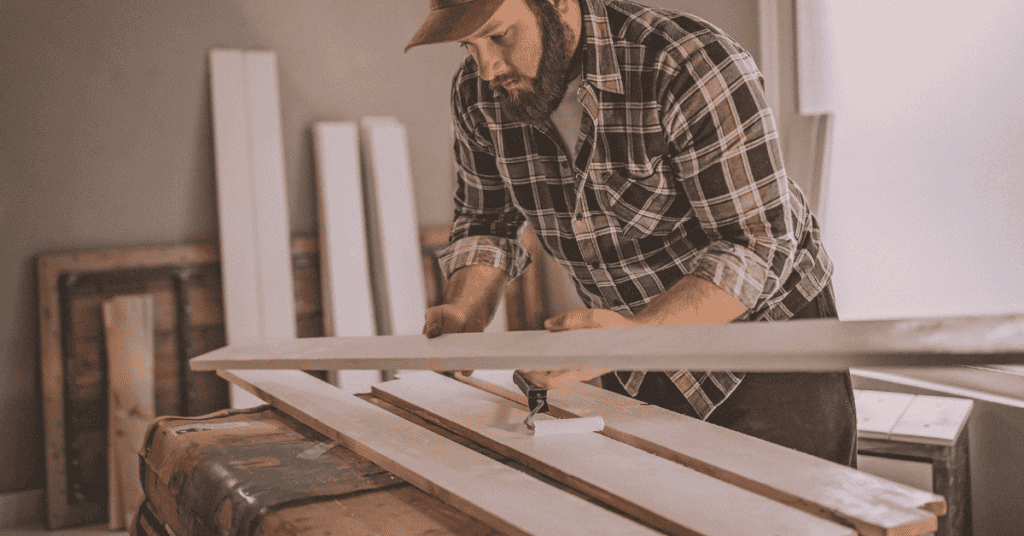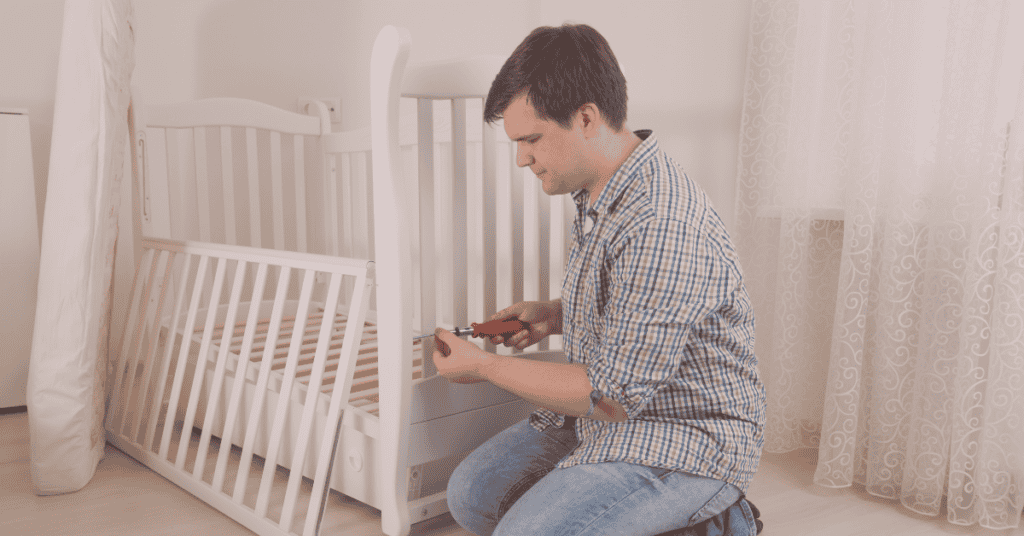Let us begin with the truth – building a baby crib is no rocket science. It does seem like complex woodwork, especially when you see those fancy and expensive cribs on the shop floor. But once you nail it down to the basics, how to build a baby crib is a simple task that takes just a few materials and tools to complete.
This DIY project does save your money, but there are a few intangible incentives that building a crib for your baby rewards you with. You get to customize the crib as you may have imagined it to be. And a personalized crib is the best gift that you could give to your newborn, something that is timeless and can be passed down over generations.
So, if your baby is on the way, get started with the project right away. Just follow these step-by-step instructions, and you will be ready with the crib before your baby arrives.
1. Get Started

While building a baby crib is not difficult, it does need some planning before you get started. The crib needs to be sturdy and safe for your baby. If not built the right way, it could be dangerous for the child.
The crib should be constructed well without any flaws because that is where your baby will be spending the maximum time of the first few months of its life.
2. Gathering the Supplies
Before diving in letting us first list out the right supplies that you will need to give shape to your project. You may already have some of the tools and would have to procure the remaining. Here is the list of the tools that you will need. Get them before you start so that the process does not turn out to be overwhelming.
3. Materials and Tools

- Hammer
- Wood screws
- Wood glue
- Kreg Jig
- Drill
- Miter saw
- Packet screws
- Table Saw or Circular Saw
- Square
- Paint
- Finish stain
4. Picking the Wood
Now that your supplies are ready, it is time to sort out the wood. This is not a straightforward selection because of the plethora of options available. There is oak and pine and other wood varieties too.
If durability is a concern, then harder wood should be the option. If you are looking to save on some money, then go for the softer wood variety.
There is no limit on the wood choices to use in your crib project. Choose the wood that you prefer and what you think will blend with the other upholstery in your baby’s room.
Birch plywood is a good option for the sideboard. It is bright in color, stable, and gives a good balance. Alder wood is perfect for the head and the foot sides.
While you can choose from the varied wood varieties, the crib dimensions stay the same regardless of the type of wood you use.
5. Dimensions of Wood Pieces

Here are the wood dimensions that you need to be ready with.
- 2x10s or 8 ft length- 5 nos.
- 2x2s of 8 ft length – 4 nos.
- 1x3s of 8 ft length – 7 nos.
- 2×4 of 6 ft length- 1 nos.
- 1×2 of 8 ft length – 2 nos.
- Quarter round pieces 8 ft length – 2 nos.
- 4×8 sheet made of OSB wood- 1 nos.
6. Cutting the Crib Pieces
You will now have to cut the wood pieces to use on the front and back of the crib. It is best to use the miter saw as it creates accurate and precise cuts. Always wear a dust mask when cutting wood to avoid inhaling any toxic substance.
For the crib’s side panels, use the three 2x10s, cut them to 28.5 inches, and cut the 2x2s into 27.75 inches. Pre-drill two holes both at the top and the bottom of the 2x2s using a Kreg Jig. This will let you attach it to the remaining 2x2s. Using wood screws, attach the top and bottoms of the 2x2s with the 2x10s.
7. Assembling the Sides and Back Panel of the Crib

You will need to cut the 2x10s to 48 inches and countersink the screw at both edges so that it gets attached to the side panel. Using the 1x2s lets you create extra support for the back rail.
Make the back and the side panel stand up together and align them so that they are at a level. You will need screws to hold them firmly. This creates a frame for the crib.
8. Building the Rail
You will need the 2x2s cut to 52.5 inches and the 1x3s cut to 28.5 inches to build the rails. Drill the pocket holes on the bottom and the top of the 2x2s. This needs to be attached to make the crib rail.
Here you will have to ponder about the slat spacing and how far you will place them. Once decided, this is the design that will be used throughout the project.
The placing of the slat is crucial. You will need an even dimension so that the same spacing can work out across the crib. Lay the crib slats first and ensure that they are fitting properly before you begin securing them with sockets and screws.
Once done get the 2x2s and screw the slat with it. Pre-drilled holes are a good idea at the top and the bottom of the 2x2s that make it easy to attach to the frame. Wood glue should be used to ensure proper alignment.
The slatted frame is preferred over a board because it allows air flow through the mattress.
The next step is to attach the front railing to the side panels. Take out the 2x2s and create pocket holes that secure the front railing and side panels.
9. Adding the Platform for the Mattress
You now need to create a platform to place the mattress. For this, you will need the 2x2s cut into 24.5 inches to build the platform frame. Use the OSB wood and attach it to the platform with wood screws. The best way to cut the OSB wood is to use a circular saw, or a table saw.
Drill from the top to the bottom of the platform and then lower the platform into the crib. Ensure that it is level before you go ahead and secure it tightly in its place.
10. The Finishing
Before you begin with the finishing, and every part of the crib to make the surface smooth. There should be no loose wood pieces else the child may choke on them. It could also cause injuries to the skin.
Your woodwork is done, and your crib is ready. Now give it a nice stain or a paint finish, or get an opaque and clean wooden finish on the crib. Just make sure that you select a finish that is safe for babies.
Wood oil from an organic shop is a safe option that you may want to consider for the finish.
11. Additional Things to Keep in Mind
- Height of the crib
Baby’s cribs are usually of two sizes which are 140*70 cm and 120*60 cm. You can choose your version. When calculating the height, you should keep safety in mind. When the baby starts to stand up there should be sufficient space between the top end of the sides and the mattress to not let the child climb over. 60 cm is an ideal height, but you may want to increase it further.
The size of the mattress is important to consider when buying the materials. Everything that surrounds it should be a little larger.
- Adjustable height
You may want to customize the crib to glue the hole cut-outs and fit them in the sideboard cut-out. These cut-outs start at varying heights to offer more adjustment room. You thus do not need to bend a lot to lift and place down your child into the crib, saving your back a bit.
Conclusion
Here is the step-by-step guide to help you design and build a baby crib. Use the instructions and get creative to assemble a one-of-a-kind personalized crib for your child. There is no end to the possibilities of how you can adorn the baby crib and make it special for the new member.
Take time and plan well because the baby crib is a statement piece filled with great memories to cherish for years to come.

